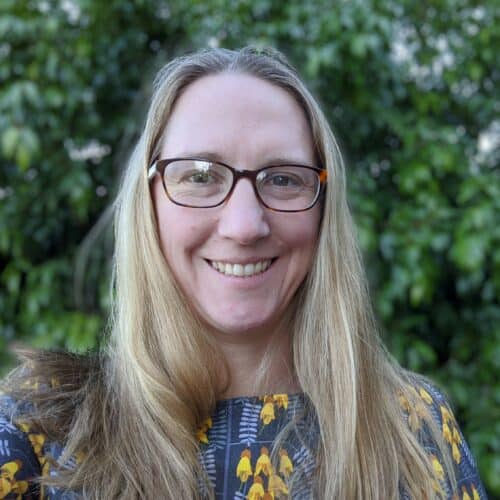Dr. Giummarra is currently Senior Research Fellow in the School of Public Health and Preventive Medicine at Monash University in Australia. She has been in the pain field for the last 15 years and has been an IASP member for the entire time. IASP talked with her about her research. For more information, please visit her webpage.
How did you get into pain science? Did you always know it was what you wanted to do or did you start somewhere else?
I was actually resistant to study pain in the early days of my research career. My attendance at the 2005 World Congress, only months before commencing my PhD on phantom limb phenomena, was completely overwhelming. How was I to learn enough about something like pain that has so many cellular, neural, psychological, social, economic, legal, etc. complexities?! It wasn’t until I was well into my PhD that I accepted that I couldn’t study phantom limbs without acknowledging and addressing the experience of pain!
What topics does your current research/ clinical practice cover? How does this affect the public?
Since completing my PhD in 2011 I’ve been drawn to research that allows us to better understand the population prevalence and impacts of pain, and to understand and address ethical and legal issues in pain. In particular, my research over the past five or so years has examined the negative impacts of medicolegal or compensation procedures on pain after injury, and seeks to identify and reduce disparities in access to treatment for pain and mental health after injury. My work has yielded insights to help compensation schemes to reduce claimant perceptions of injustice and to increase perceptions of fairness through compensation scheme procedures and claims handling. My work has also resulted in the implementation and evaluation of population health focused models of care for people living with pain after injury who are seeking treatment in the community.
Do you have collaborators? Why did you choose to work them and what problem are you trying to solve?
As a non-clinician researcher conducting both epidemiological and clinical research my collaborations with a broad range of experts is vital for the success of my work.
I currently collaborate with a range of clinicians, including psychiatrists, rehabilitation physicians, trauma and emergency physicians, anesthetists, physiotherapists, occupational therapists, psychologists, social workers, nurses, as well as non-clinical collaborators in public health and engineering.
More recently I have also been building my capacity to engage end users – injured people and their carers – as partners in my research, which has been enormously valuable for me as a researcher, and for my research program. Addressing pain and mental health after injury is a whole of system problem, and so these diverse collaborations help me to develop, adapt and apply innovative solutions.
What has been your biggest professional challenge/obstacle thus far and how did you handle it/overcome it?
Definitely juggling a young family and personal health issues alongside the ups and downs of an academic career, especially the dwindling funding success rates early and mid-career researchers face these days. To be honest I’m not sure I’ve overcome these challenges, but I do manage them by continually honing my time management strategies, setting limits around my work time and space, and opening up to both ask for and accept help.
If you could offer one piece of advice to a younger you, what would it be and why?
That the grass grows greenest wherever you water it. Make sure that you spend time on projects and people in your life that are important for the long haul, both inside and outside of work. And learn how to say “no” with confidence ASAP.
Why did you become an IASP member and why have you remained one?
Initially I became a member so that I could attend the 2005 World Congress on Pain and gain access to access the vital supports offered to trainees. Since then, however, I have to say that my member of IASP is one of my most valued society memberships. As an executive committee member of the Ethical and Legal Issues in Pain SIG, I have been able to further establish myself as an emerging/mid-career pain researcher, develop diverse skills in convening symposia and workshops, and to connect with clinicians and researchers around the globe to advance innovation and reduce inequities in pain research and practice.
What do you do in your spare time? Do you have any hobbies, other pursuits, or hidden talents?
I love spending my spare time with my young family. I also love sewing, quilting and knitting.
Interested in becoming a member of IASP?
With your IASP membership, you gain access to:
- PAIN Journal
- Pain Education Resource Center (PERC)
- Access to 24 Special Interest Groups (SIGs)
- Online Career Center access
- Discounts on World Congress
- Network of thousands of pain researchers from around the world!
Membership dues are determined by income, the rates of membership can be found at this page of our website.


